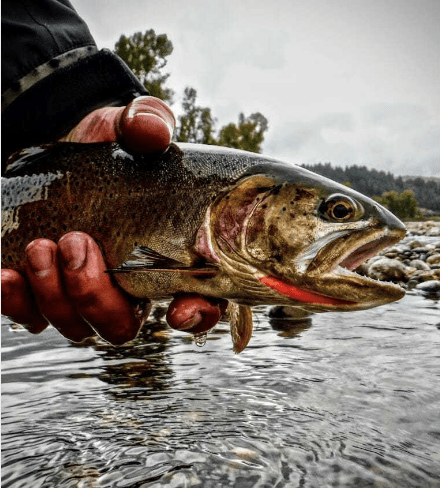Snake River Cutthroat Trout Information
Snake River Cutthroat Trout
The Snake River Cutthroat Trout in Colorado are an enchanting species with a rich fly fishing heritage. These trout spawn in clear mountain streams, displaying captivating reddening behaviors during the breeding season. Anglers are spellbound by their vibrant hues and playful nature, as these majestic fish can grow up to 20 inches or even more significantly. Their preferred habitats include serene, unpolluted waters with ample cover like deep pools and undercut banks. Exploring their origins, spawning habits, size, and habitat choices unveils the true allure of Snake River Cutthroat Trout—a true treasure for fly fishing enthusiasts in Colorado's waters.
Colorado’s Snake River Cutthroat
The Snake River Cutthroat Trout (Oncorhynchus clarkii pleuritic) is not native to Colorado. Although this remarkable fish is found in the Snake River Basin, which stretches from Wyoming into Idaho and Oregon, there is no historical evidence of it being a natural inhabitant of Colorado's waters. Its native range primarily excludes Colorado within the region's ecosystem.

Spawning behavior
Snake River Cutthroat Trout spawning behavior. They typically spawn during spring, usually between April and June, depending on environmental conditions. The fish migrate to suitable spawning grounds, often small tributaries and headwaters of rivers and streams. Females create redds (nests) by excavating gravel with their tails, where they deposit their eggs. After fertilization by the males, the eggs incubate for several weeks until they hatch into fry.
Size and Growth Patterns
Snake River Cutthroat Trout vary in size depending on their age and habitat conditions. Juvenile trout usually measure around 3 to 6 inches in length. As they mature, they can reach an average size of 10 to 16 inches, with exceptional individuals growing even more significantly. Factors such as food availability and habitat quality play an important role in determining the growth rate of these fish.
Preferred habitats
Snake River Cutthroat Trout thrive in diverse habitats, inhabiting pristine lakes and flowing rivers. In lakes, they favor crystal-clear, frigid waters and feast on many sustenances, ranging from insects and small fish to crustaceans. Within rivers, they stake a claim in riffles, runs, and deep pools, strategically seeking refuge and swiftly ambushing their prey. Their existence hinges upon specific environmental factors, including optimal water temperature and oxygen saturation. Appreciating these distinctive characteristics allows us to grasp the intricacies of the Snake River Cutthroat Trout's adaptation to their unique and varied habitats.
Threats and Conservation Efforts
Snake River Cutthroat Trout in Colorado face significant threats from other species, particularly the aggressive predator Brook Trout and adaptable Brown Trout. These invaders outcompete the trout for resources and hybridize, further endangering their purity. Agencies like Colorado Parks and Wildlife (CPW) conservation efforts focus on habitat restoration, including stream bank restoration, water quality improvement, and spawning area enhancement. The U.S. Fish and Wildlife Service (USFWS) designates the trout as a "Species of Concern," collaborating with other organizations to develop recovery plans, monitor populations, and conduct research for effective conservation strategies. Protecting and restoring the Snake River Cutthroat Trout is a priority.
